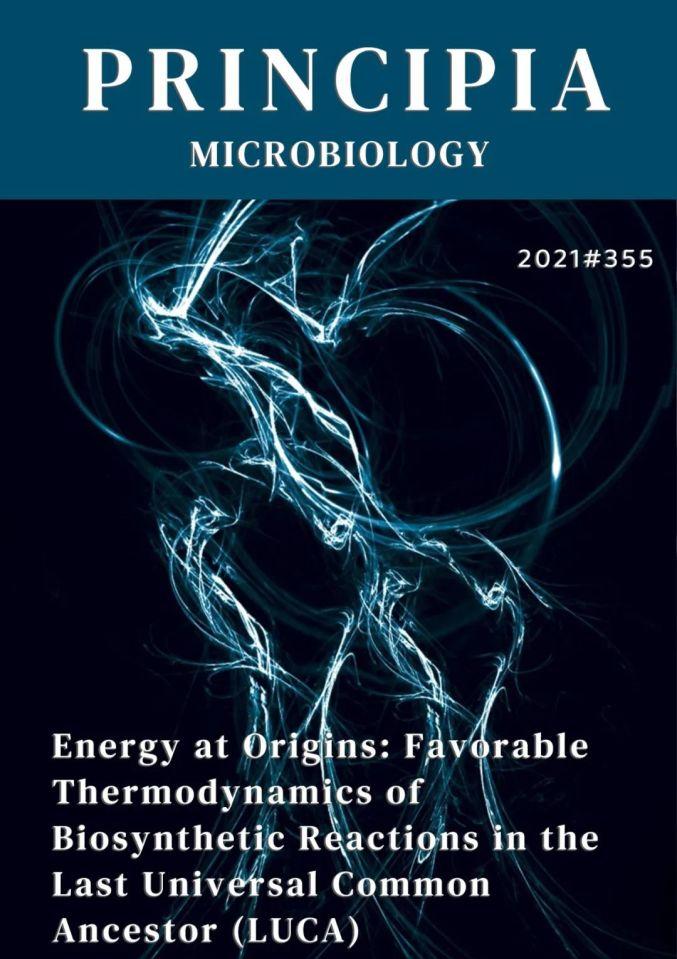
You may have heard a saying that every creature on Earth comes from LUCA.
Luca' full name is "The Last Universal Common Ancestor," an early life form. It is now widely believed that LUCA lived at least 3.5 billion years ago, or even much older. LUCA was not the earliest life, but what sets it apart is that it is considered to be the last common ancestor of all living creatures, in other words, only LUCA's immediate family eventually survived and gave birth to the earth's biosphere today.
For LUCA and even earlier life, all current theories about the origin of life argue that a source of energy is needed to facilitate the occurrence of their primordial chemical reactions, the emergence of biological metabolism. But we still don't know, what exactly is this source of energy? How did life's first chemistry begin?
Recently, in a new study published in Frontiers in Microbiology, a team of scientists reconstructed the metabolism of LUCA and found that almost all of the chemical steps used by primitive life to piece together the molecular parts of cells were energy release reactions. They believe that the energy needed to synthesize the basic parts of life that we have been looking for comes precisely from metabolism itself. There is also a basic starting compound that is essential for the whole process, and that is hydrogen (H2).
The research team has been exploring how and where life on early Earth arose. Their approach includes both experimental and computational research.
For example, scientists conduct chemical experiments in the laboratory, using catalytic and environmental conditions similar to those found in hydrothermal vents on the ocean floor to study the reaction between hydrogen and carbon dioxide. In addition, they have developed a form of "molecular archaeology" on the computer to help find many different traces of primitive life that are preserved in the proteins, DNA, and chemical reactions of modern cells.
In this latest study, they cleverly chose not to study other aspects such as genes, but instead focused on the information contained in the chemical reactions of life itself.
When metabolic reactions first appeared about 4 billion years ago, proteins or enzymes did not exist to catalyze reactions because these molecules had not yet evolved. Metabolism must come from reactions that can occur in the environment, and perhaps with the help of some inorganic catalyst.
However, with or without a catalyst, in order to develop further, the reaction must release energy. There has been a lot of thought in the literature about possible sources of metabolic energy, but it seems that few people have studied the metabolic response itself.
The researchers produced a catalog of 402 reactions that simple and ancient cells in modern cells (bacteria and archaea) used to construct the basic parts of life, including 20 amino acids, bases for DNA and RNA, and 18 vitamins (cofactors) necessary for metabolism.
These responses are "highly conservative," in other words, they may have hardly changed since the origin of life about 4 billion years ago. They are common to all cells and should therefore also be present in LUCA. These reactions can reveal how primitive life processed energy in metabolism, and where it got the energy needed to further develop life's chemical reactions.
The team first simulated different environmental conditions with the help of computer programs and studied the energy characteristics of 402 reactions, because the environment often has an important impact on the reaction energy. The study covered environmental conditions ranging from acidic to alkaline (pH 1 to 14), temperatures spanning from 25 to 100 °C, and relative amounts of different reactants and products were also included.
Scientists have also studied the energy role of hydrogen in great detail. Because the reaction first requires hydrogen, allowing the carbon in carbon dioxide to enter the metabolism.
Luca metabolism. The team studied 402 biochemical reactions required for biosynthesis of the fundamental building blocks of life's molecules. Each circle represents a reaction, and the color corresponds to the energy released by each reaction. Green means energy is released, purple means energy is needed. | Image credit: HHU/Jessica Wimmer
The results showed that LUCA metabolism does not actually require external energy sources, including ultraviolet rays, meteorites, volcanic eruptions or radioactive sources may not be necessary. In contrast, in the typical environment near many modern seafloor hydrothermal vents, the energy required for metabolic reactions comes from the metabolism itself. In other words, the energy of LUCA life comes from life itself.
They observed that the optimal energy conditions fell in an environment with a pH of about 9 alkaline conditions and a temperature of about 80 °C, while hydrogen was required to fix carbon dioxide. In fact, this is pretty much exactly what we observed in a hydrothermal field in the middle of the Atlantic that produces hydrogen. In that environment, about 95-97% of the metabolic response to LUCA can be carried out spontaneously.
In the endless darkness of the hydrothermal system, hydrogen is like a kind of "chemical sunlight", bringing life to the dark places.
Jessica Wimmer, lead author of the study, said: "Regarding the energy sources of the origin of life, we can say that pure chemical energy is enough. Maybe it doesn't need sunlight, it doesn't need meteorites, it doesn't need ultraviolet rays, just hydrogen and carbon dioxide, plus some ammonia and salt. ”
#创作团队:
文:M ka
#参考来源:
https://www.hhu.de/en/news-article/life-arose-on-hydrogen-energy
https://www.frontiersin.org/articles/10.3389/fmicb.2021.793664/full
https://cosmosmagazine.com/science/biology/what-fuelled-the-origins-of-life
#图片来源:
Cover source: Pixabay